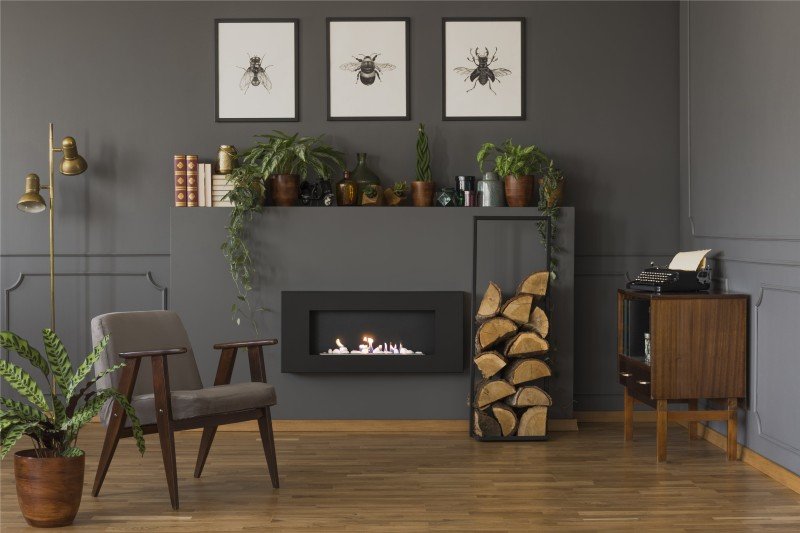A Comprehensive Guide to Small Fireplaces: Efficient Heating and Cozy Living
In an era where energy effectiveness and area optimization are ending up being significantly essential, small fireplaces have emerged as an attractive option to traditional, bulky hearths. These compact heating options use heat and a focal point for any room, increasing both convenience and visual appeal. Best Fireplace Online explores the various types of small fireplaces, their advantages, installation factors to consider, and upkeep ideas, ultimately helping homeowners make notified decisions when considering these charming heating options.
Understanding Small Fireplaces
Small fireplaces provide a range of styles, including electric, gas, ethanol, and wood-burning models. Each type provides distinct advantages and design possibilities, making them appropriate for numerous living spaces.
Types of Small Fireplaces
| Fireplace Type | Description | Pros | Cons |
|---|---|---|---|
| Electric | Uses electrical energy to generate heat. Provides lots of styles, including wall-mounted and freestanding units. | - Easy to install - Low maintenance - No venting needed | - Limited heat output - May incur greater electrical power expenses |
| Gas | Burns gas or propane. Frequently readily available as logs in a traditional fireplace or modern styles. | - Efficient heat output - Cleaner than wood - Easy ignition | - Requires gas line installation - Some systems need venting |
| Ethanol | Burns bioethanol, supplying genuine flames without a chimney. | - Eco-friendly - Portable - No installation needed | - Limited heat output - Higher fuel costs |
| Wood-Burning | Traditional fireplaces that burn firewood. Often utilized in more rustic settings. | - Great heat output - Rich atmosphere - Can be used during power failures | - Requires a chimney - Regular upkeep and cleaning |
Advantages of Small Fireplaces
- Area Efficiency: Small fireplaces are ideal for homes, condominiums, and smaller homes. They take full advantage of heat without using up excessive flooring area.
- Affordable Heating: In particular cases, small fireplaces can supplement main heating unit, reducing general energy costs while creating a more comfortable environment.
- Atmosphere and Aesthetics: They provide a welcoming focal point to a space, producing a cozy atmosphere perfect for relaxation and celebrations.
- Adaptability: Available in numerous styles and styles, small fireplaces can match any decoration, from modern minimalist to rustic traditional.
Installation Considerations
When pondering a small fireplace, installation is a crucial aspect that can impact the choice of model. Below are useful factors to consider:
- Local Regulations: Building codes can differ by place; constantly inspect local guidelines before installation.
- Ventilation Needs: Depending on the type, small fireplaces might need various ventilation systems. Gas fireplaces may need venting outdoors, while electric models do not.
- Source of power: Electric designs require proximity to electrical outlets, while gas and ethanol designs might require a gas line or fuel storage.
- Weight and Structure: Installing wall-mounted units may require reinforced wall locations, whereas free-standing models are much easier to move.
Maintenance Tips
Like any other home device, small fireplaces require regular upkeep to work effectively and securely. Here are essential maintenance ideas for various fireplace types:
For Electric Fireplaces:
- Cleaning: Wipe down the unit with a soft fabric to remove dust and keep the heating system ducts clear.
- Evaluation: Check the power cable frequently for any damages or indications of wear.
For Gas Fireplaces:
- Annual Inspections: Schedule annual assessments by an expert to make sure safe gas flow.
- Clean the Logs: Regularly clean the burner and logs to keep optimum performance.
For Ethanol Fireplaces:
- Fuel Storage: Store ethanol fuel securely away from direct sunshine and heat sources.
- Regular Cleaning: Clean the burner after each usage to preserve efficiency and prevent soot buildup.
For Wood-Burning Fireplaces:
- Chimney Sweeping: Have the chimney professionally cleaned as soon as a year to prevent creosote accumulation.
- Firewood Storage: Only usage dry, skilled wood to reduce smoke and promote efficient burning.
Regularly Asked Questions
1. Can I set up a small fireplace myself?
While some electric and ethanol fireplaces are reasonably simple to install, it is recommended to employ an expert for gas and wood-burning units to ensure compliance with regional building regulations.
2. How much does it cost to run a small fireplace?
The expense will differ depending upon the type of fireplace. Usually, electric fireplaces may incur greater electricity expenses, while wood-burning choices can draw from renewable fire wood products.
3. Do I need a license for setup?
Licenses are usually required for gas and wood-burning fireplaces due to their setup complexity and safety guidelines. Constantly check with local authorities.
4. For how long can I run an electric fireplace?
Most electric fireplaces can run for extended periods; however, it's advised to follow maker guidelines to avoid overheating or harming the unit.
5. What type of small fireplace is best for a small area?
This mainly depends on specific requirements. Electric models are flexible and simple to set up, while gas and ethanol options supply real flames with effective heat output.
Small fireplaces represent a practical and elegant alternative for those seeking efficient heating solutions in compact living spaces. With different types available, house owners can choose designs that align with their visual choices and space requirements. By understanding the installation procedures and routine maintenance needed, individuals can enjoy the comfort and ambiance that small fireplaces provide for several years to come. Whether for a cozy evening in the house or a welcoming area for events, small fireplaces are an enduring element of modern and traditional design alike.

